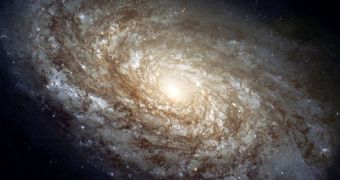According to research conducted using the Very Large Array radio telescope in New Mexico and the Plateau de Bure Interferometer in France, astronomers are now coming to believe that the enigma they've been faced with so far – which came first? The galaxies or the black holes at their cores? – actually has a fairly simple answer – the black holes. The evidence to support this claim seems to overwhelm those stating the contrary, or the fact that the two evolve together.
"It looks like black holes came first. The evidence is piling up," announced New Mexico National Radio Astronomy Observatory expert, Chris Carilli, during the 213th meeting of the American Astronomical Society in Long Beach, California. He added that the mass ratio between the black holes at the center of galaxies and the central “bulge” – the area around them where many stars and gas clouds are gathered – is approximately the same, regardless of the size or age of the galaxy.
"This constant ratio indicates that the black hole and the bulge affect each others' growth in some sort of interactive relationship. The big question has been whether one grows before the other or if they grow together, maintaining their mass ratio throughout the entire process," asked Caltech researcher Dominik Riechers, a member of the team that conducted the newest study.
"We finally have been able to measure black-hole and bulge masses in several galaxies seen as they were in the first billion years after the Big Bang, and the evidence suggests that the constant ratio seen nearby may not hold in the early universe. The black holes in these young galaxies are much more massive compared to the bulges than those seen in the nearby universe. The implication is that the black holes started growing first," added Fabian Walter, a member of the team, and a researcher at the Max-Planck Institute for Radioastronomy, in Germany.
"We don't know what mechanism is at work here, and why, at some point in the process, the 'standard' ratio between the masses is established," concluded Riechers, adding that the new telescopes, currently under construction, would expand the now-existing infrastructure to a point where thorough observations of galaxy features would become possible.

 14 DAY TRIAL //
14 DAY TRIAL //